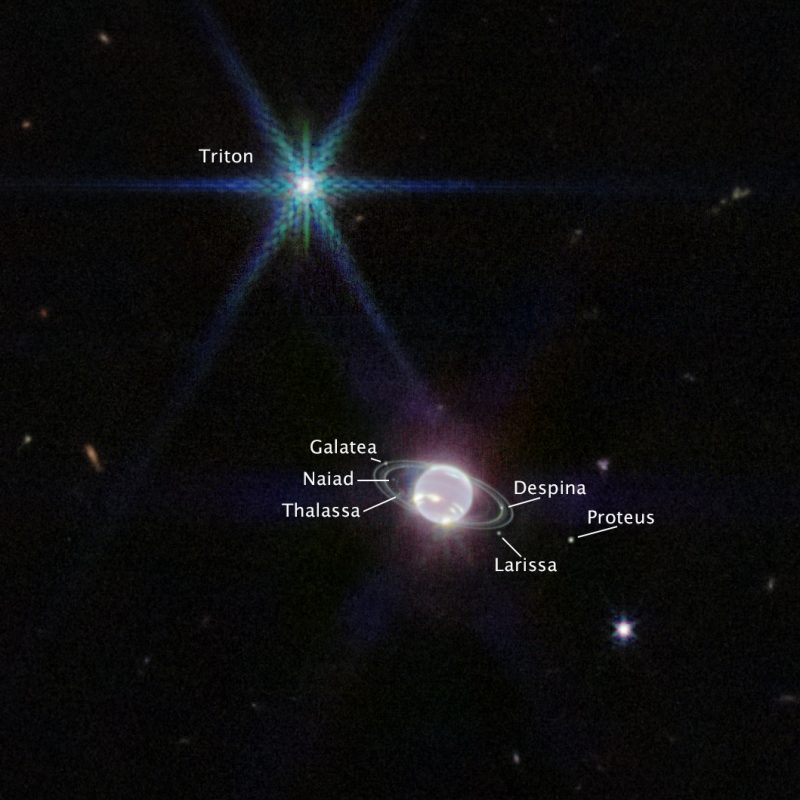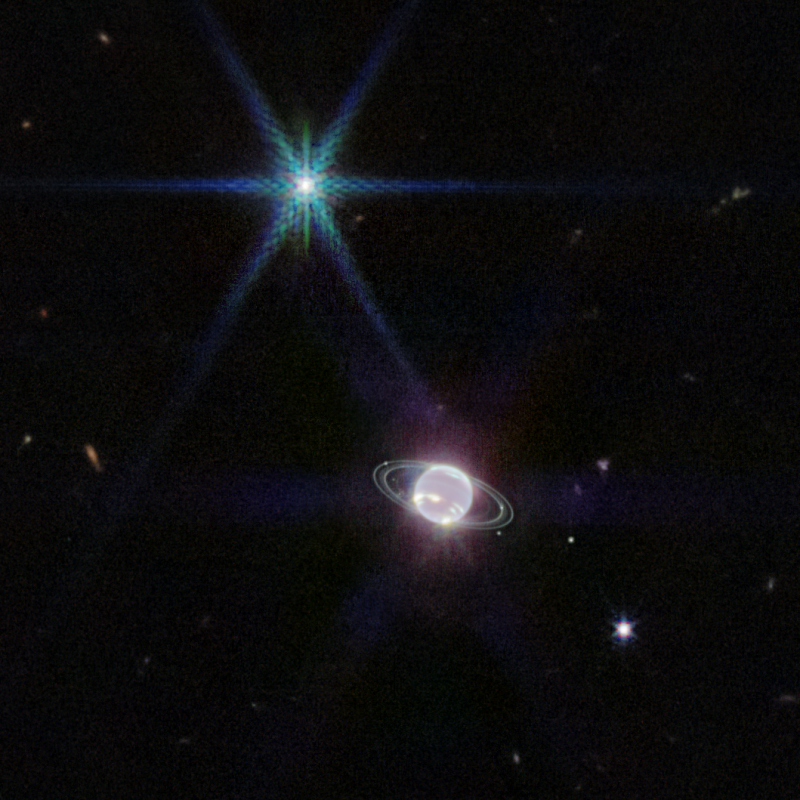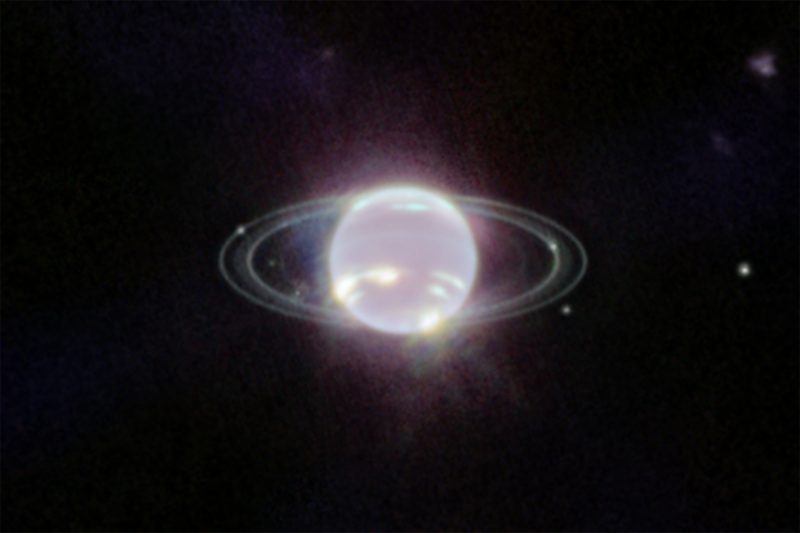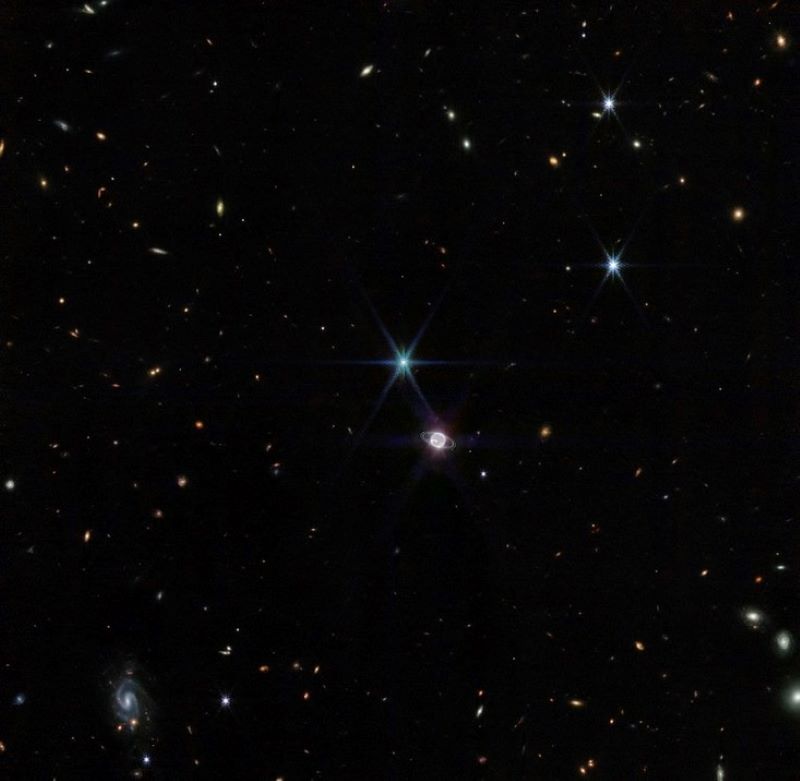
Webb sees Neptune’s rings and moons
The new Webb telescope in space has been looking closer to home lately. It’s moved on from its images of the farthest known galaxies, into our solar system. It has already targeted Mars and Jupiter. And now we delight in these new views of our solar system’s outermost major planet, Neptune. NASA released these images – our clearest view of Neptune in more than 30 years – today (September 21, 2022). Indeed, not since Voyager 2 made a flyby in 1989 have we gotten such a good look at Neptune, its family of moons and its two bright rings and faint dust bands.
Why Webb doesn’t see a blue Neptune
Neptune orbits some 30 times farther from the sun than Earth. It’s the most distant and smallest of the four gas giant planets in the outer solar system. To the eye, through a small telescope, it looks blue. And its beautiful blue appearance has been captured in visible light by Hubble.
Neptune’s deep gaseous atmosphere is mostly hydrogen and helium. The blue color is a sign that it has more methane in its atmosphere than Jupiter or Saturn. Yet, in Webb’s near-infrared images, the familiar blue color disappears. In this case, that’s because methane gas strongly absorbs red and infrared light.
So where’s the methane? Indeed, it’s still there, and Webb’s Near-Infrared Camera (NIRCam) does pick it up, in Neptune’s high-altitude clouds. In Webb’s images, you might see the prominent methane-ice clouds as bright streaks and spots. We can see them, in fact, because they reflect sunlight before methane gas has a chance to absorb the infrared light.
More to see in Webb’s images
The new Webb images also show Neptune’s southern pole, including a vortex with the high-latitude clouds around it. Conversely, the northern pole is out of our view, but there’s an intriguing bright glow toward that region.
Additionally, you might be able to spot the thin line around the planet’s equator. This isn’t part of Neptune’s ring system. In these Webb images, the rings cross above on top and below and behind the planet. Instead, that line around Neptune’s equator might be a sign of the global atmospheric circulation that powers Neptune’s winds and storms. At the equator, the atmosphere descends and warms, glowing in infrared more than surrounding areas.
Cool, huh? Weather watching on another world …
Webb sees Neptune’s rings in all their glory
Neptune’s rings are vastly too faint to see with small telescopes. Large earthly telescopes first glimpsed them as “arcs” in 1984. But it took the Voyager spacecraft’s passage in 1989 to see them clearly. In these new Webb images, you can see outer ring of Neptune – called the Adams ring – for John Couch Adams, whose precision mathematics led to Neptune’s discovery in 1846. On the left you can see a bright moon, Galatea, there. Galatea lies just inside the ring and acts as a shepherd to it.
Moving inward, the faint sheet of material that comes next constitutes the Lassell and Arago rings. The next bright ring is Le Verrier. On the right side of the image, the bright moon Despina lies just inside and is the shepherd for the Le Verrier ring.
Lastly, the fainter ring closest to the planet is called the Galle ring.
All of these names are earthly names applied to Neptune, of course, and made official among earthly astronomers by the International Astronomical Union.
Heidi Hammel, an Interdisciplinary Scientist on the James Webb Telescope Project, said:
It has been three decades since we last saw these faint, dusty rings. And this is the first time we’ve seen them in the infrared.

Neptune’s large moon Triton
Webb captured seven of Neptune’s 14 known moons. Triton, the largest moon of Neptune, almost looks like a star in the new Webb images, with its bright diffraction spikes.
Triton is an unusual satellite. It’s covered in frozen nitrogen, which makes it so reflective. It returns 70% of the sunlight that hits it back into space. Triton also orbits Neptune in a retrograde orbit. Scientists think that before it was a moon it was a Kuiper belt object that wandered too close to Neptune’s gravitational well.

Wide-field view of Neptune
Webb has plans to study Neptune and Triton again next year. In the meantime, we can enjoy this wide-field view of the 8th planet, its rings and odd moon floating in the depths of our solar system, with far more distant galaxies shining in the background.

Bottom line: Webb sees Neptune’s rings and moons! They’re the best images in 30 years, since Voyager 2 swept past. See the new Webb images here.











